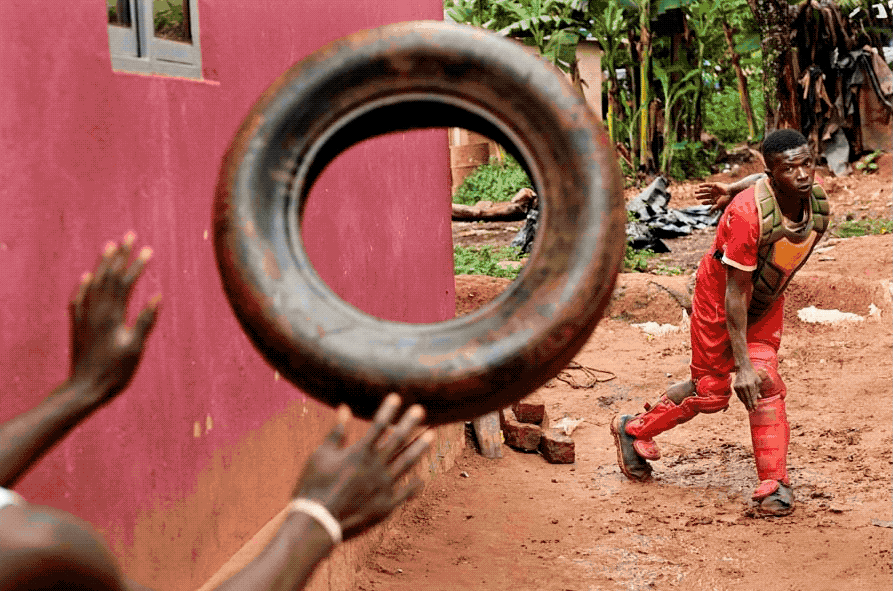Magic mud is major leagues’ dirty little secret : Smooth as melted chocolate with just a touch of grit, it’s used to ‘de-gloss’ baseballs. The sole purveyor won’t reveal exactly where he finds it.
- Share via
DUNEDIN, Fla. — The mud itself is a deeply held family secret--sort of like the formula for Coca-Cola--but 70-year-old Burns Bintliff will tell you this much: Major league baseball would be in a real pickle if it wasn’t for his Lena Blackburne Rubbing Mud Co.
Although practically no one in professional baseball knows his name, Bintliff, a retired carpenter with the New Jersey Turnpike Authority, is the sole purveyor of the mud umpires rub on six dozen baseballs before every major league baseball game. The reason: New white balls are slick and have to be “de-glossed” so they don’t slip out of a pitcher’s grip.
Even the umpires aren’t quite sure who digs the mud, where it comes from or how much it costs. But they do know it’s wonderful stuff--smooth as melted chocolate with just a touch of grit, light enough so as not to discolor the ball--and the daily ritual they perform with it is one of baseball’s more charming traditions to survive in an era of plastic grass, radar guns and managers who lug computers into the dugout.
“There’s one question I want answered,” American League umpire Dan Morrison said the other day when he met Bintliff at a spring training game in Dunedin. “How much does a container of this mud cost?” Bintliff allowed that it probably didn’t cost as much as Morrison thought and let the matter drop. Well, then, Morrison asked, how did he get the mud? And for that, Bintliff--a one-man cottage industry with no competition--had some answers.
Once every summer he and one of his sons row out into a creek in New Jersey’s Burlington County at low tide, to the precise (and secret) location where major league mud has been harvested for more than 50 years.
Wallowing waist-deep, they skim off the top half-inch layer of mud and shovel 500 pounds of it into their boat. Later the mud is mixed with some other (secret) substance. The mud is packed into three-pound plastic containers in his son-in-law’s basement in Delran, N.J., and his own garage in Seminole, Fla., and shipped out to the 26 major league clubs in March. One container, selling for $24, is enough to last a team for the entire season, although occasionally an uninformed janitor or construction worker has been known to discard the container--”Whaddya mean it’s important? It’s just mud”--and the team’s traveling secretary will have to contact Bintliff for an emergency shipment.
Bintliff, who says he’d starve to death if he had to depend solely on his income from mud, has no desire to expand the business. He declines most interview requests, once tossed away a letter from a Tokyo firm wanting to promote Lena Blackburne mud in Japan and doesn’t even like the idea of shipping to Canada, although he has to because there are two major league teams there.
“I’m really happy and satisfied with things the way they are,” he says. “As far as trying to improve the product goes, I wouldn’t even consider it. This mud is perfect. It’s magical. One umpire, Tom Gorman--poor soul, he’s dead now--told me a number of times that if I stopped supplying mud, umpires would be out of business. Course, he was exaggerating a bit.”
In baseball’s early days, players took the shine off new baseballs with shoe polish, dirt, tobacco juice or fingernail scars. Then in the mid-1930s, a coach with the Philadelphia A’s, Russell Aubrey (Lena) Blackburne, found the perfect rubbing substance in the waters near his Palmyra, N.J., home.
His mud has been used exclusively by the American League since 1938, the National League since 1955, and is on display at the Baseball Hall of Fame in Cooperstown, N.Y.
Blackburne died in 1968 and left the little business to his boyhood chum, John Haas, who had helped Blackburne in the annual harvesting and processing when both men were in their 80s and would teeter off together into the mud flats at low tide. Haas, who ran a bakery, taught the secrets of mud-making to his son-in-law, Burns Bintliff.
While Bintliff and Morrison chatted before the game in Dunedin, Morrison’s partner, home plate umpire Larry Young, worked his way through a dozen new balls, spitting on the dab of Lena Blackburne mud in his left palm and working his hands over each ball as though he were shaping a chunk of clay. He recalled that during his apprenticeship in the minor leagues, umpires had to scrounge for their own mud in rain-soaked gullies and marshy river banks.
“Coming into a big league umpire’s room was a real plus in those days,” Young said. “I’d show up holding a Styrofoam coffee cup. I didn’t want the ump’s shoes or hats or anything else. I wanted their mud.”
More to Read
Go beyond the scoreboard
Get the latest on L.A.'s teams in the daily Sports Report newsletter.
You may occasionally receive promotional content from the Los Angeles Times.










